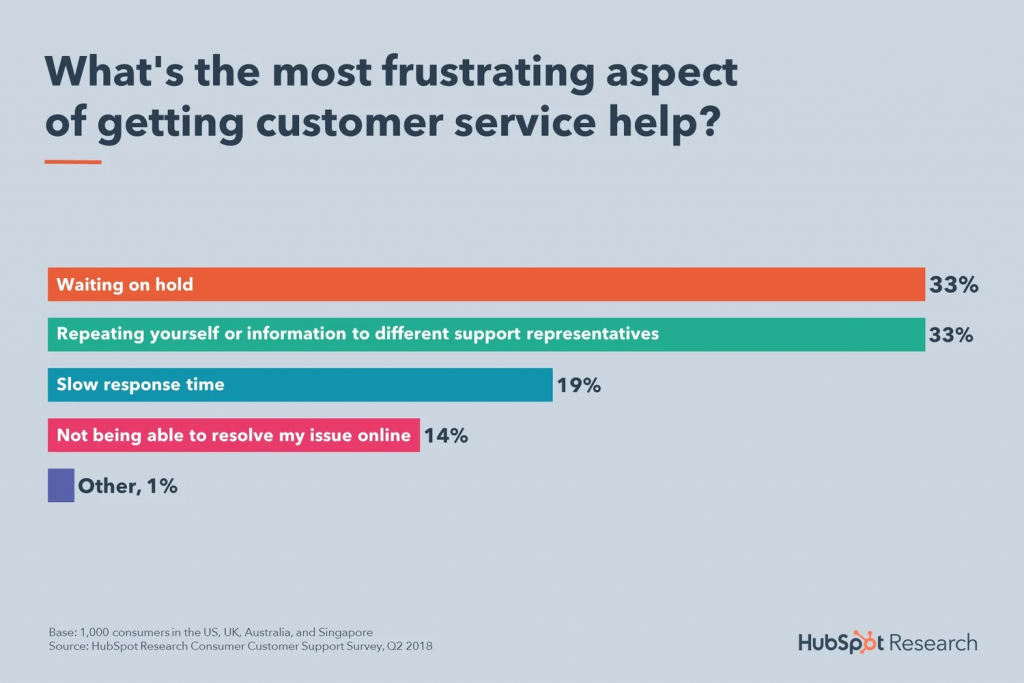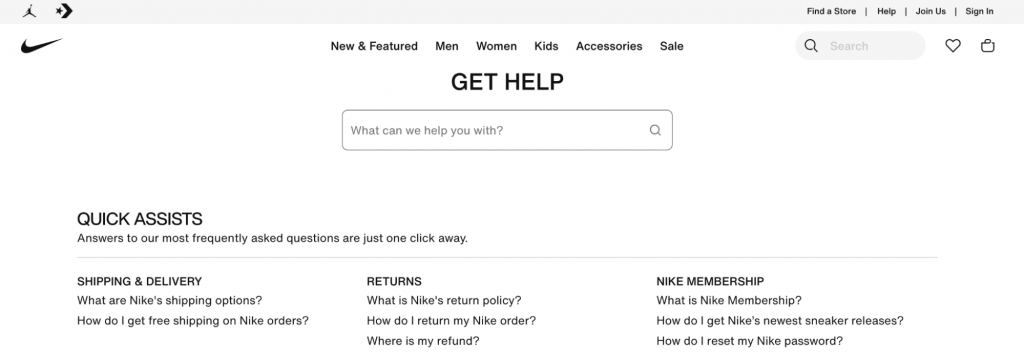“People don’t buy products, they buy experiences.” This quote is fundamental in commerce. Whether it comes to clothing or online shopping, experience has become a competitive product businesses offer.
Customer experience is a rather broad topic, encompassing various aspects. Therefore, providing a great customer experience is a multidimensional effort. One way to get closer to it is by ensuring your customers can swiftly and effortlessly resolve their issues.
Great customer support means a lot of things: fast responses, proactive agents, discounts, and more. It also entails allowing customers to solve their problems on their own, anytime they want.
Scaling Customer Service
The problem with scaling customer service is that it usually increases spending for a business.
Training, tools, and tech must be
One way to scale your support is to implement
By providing customers with the tools and resources they need to find answers to their questions independently, businesses can improve their support without investing much into expanding the team’s headcount.
In other words, you help your customers help themselves.

Consumers want to be able to solve their problems on their own (Source: Deloitte’s Customer Service Excellence Report)
What Is Self-Service?
The Advantages of Self-Service
For customers, it means convenience, as they can find answers and resolve issues quickly and independently, often 24/7. It also empowers them with control over their interactions and reduces the frustration of waiting for assistance.
On the business side,
Ultimately,
Let’s have a closer look at the benefits of
Cost Savings
As mentioned earlier,
Improved Availability
Unlike support agents, customer
Faster Problem Resolution
Since

Waiting for an answer and not being able to resolve an issue are some of the most frustrating things for consumers (Source: HubSpot)
Reduced Customer Effort
Customer effort is the level of difficulty or the amount of effort a customer needs to put in to achieve a desired outcome when, for example, seeking help.
Scalability
Data-Driven Insights
Whether it comes to a knowledge base software or a chatbot tool, such tools generate valuable data about your customers: their behavior, preferences, needs, the most common problems, and more. This data can later influence business and product improvements.
Consistency
Automated
Unlike human agents whose responses may differ,
Reduced Support Load
By handling repetitive queries,
24/7 Availability
The tools are available
Enhanced Customer Experience
A

Customer satisfaction greatly influences the chance of a customer recommending a brand or buying from it again (Source: Gladly)
Examples of Self-Service Tools
There are a few ways that you can quickly make your customers’ lives
Knowledge Base
A knowledge base is a repository of information that serves as a reference tool for individuals seeking answers to specific questions or solutions. It usually contains articles, guides, FAQs, and other documents designed to provide insights into a particular subject, product, or service.
Knowledge bases are designed for easy navigation and for users to access the information they need quickly. Whether troubleshooting problems, or learning how to use a product, or understanding a complex concept, a knowledge base has it all.
Organizations using these tools can enable customers, employees, and support teams to access information on their own, anytime they want, reducing the need for
Imagine never having to explain the same thing over and over again to new employees. With a knowledge base, all information is neatly organized, from company policies to best practices and onboarding materials. Company announcements, updates, and reports are now kept in one place, available to all employees at their convenience.
When it comes to customers, they don’t have to wait on hold forever or send a gazillion emails to get answers. Quick fixes, FAQs, or

An example of a knowledge base by Nike
Interactive Tutorials and Guides
Interactive tutorials and guides walk you through everything you need to know, step by step. They are fantastic tools that take a customer, or a user, from “I have no idea” to “I got this” in no time.
They use visuals, animations, and clear instructions to help users find their way around something. Whether these are the first steps in a
It is mostly because they offer an engaging way to assist customers in solving problems or mastering new skills. Unlike written instructions, interactive tutorials combine text with visuals, animations, and sometimes even quizzes to create a more immersive learning experience. This multimedia approach uses various learning styles, letting users absorb information effectively.

CeraVe offers customers a quiz that serves as an interactive guide to their products
Chatbots
Chatbots are another tool worth considering when investing in
Chatbots are computer programs designed to simulate human conversation and interaction with users. They use artificial intelligence and natural language processing to understand and respond to text or voice inputs in a conversational manner.
They can be integrated into websites, messaging apps, or other digital platforms, providing an efficient way for customers to get answers to their questions, resolve issues, or access information.
Chatbots can handle a wide range of tasks, from answering frequently asked questions to assisting with product recommendations and even facilitating transactions.
Chatbots use artificial intelligence to respond to customers seeking assistance. Chatbots chat in
Chatbots follow predefined scripts and algorithms, so they are consistent in their responses, and they keep learning from each interaction. This makes them even more helpful over time.

A chatbot on the Warber Parker website
What If Self-Service Is Not Enough?
Of course,
With this in mind, customers need to have an easy way of connecting with human agents. This brings us to offering a smooth transition between
The sweet spot here is about two things: giving customers the autonomy to find answers on their own and offering a helping hand when they need it.
Offering readily accessible channels such as live chat with an agent, phone support, or email ensures that customers don’t get stuck in frustrating dead ends. Instead, they can seamlessly transition to human assistance, where trained experts can provide personalized solutions and navigate the complexities of their unique situations.
Everything in business these days is
There are a couple of aspects to keep in mind on this topic:
Clear Pathways
First of all,
Progressive Disclosure

Starbucks offers customers to check out their FAQs before connecting with a support agent
Live Chat Integration
Some live chat tools can seamlessly transfer conversations from automated chatbots to human agents when needed. Customers should be able to request live assistance at any point during their interaction with a chatbot.
User Data
It’s good to collect user data such as history of interactions, purchases, and other bits. Making this data available to human agents when transitioning from
Omnichannel Support
Use tools that enable customers to switch between
Feedback Loop
Collect customer feedback about their
Monitoring and Analytics
Use analytics to track customer journeys and identify patterns where customers frequently transition from
Over to You
Customer experience is a product.
Crafting exceptional customer experiences is a big effort. One part of this effort is ensuring that customers can swiftly and effortlessly resolve their issues.
A great experience in customer support means not only rapid responses, proactive agents, or discounts but also empowering customers to find solutions at their convenience. However, the challenge is in scaling customer support without inflating expenses. Finding the right balance between quality and
By providing customers with tools to solve problems on their own, businesses can enhance their support without an expansion of their support team. In essence,
It’s more than a
- Customer Service in Ecommerce: The Best Practises
- What is Client Nurturing and How to Get Started
- Customer Satisfaction: Importance, Examples, How to Measure
- Ecommerce Personalization: Tips, Tricks and Benefits
- How to Handle Negative Feedback
- The Art of Positive Communication in Customer Service
- How AI Is Changing Customer Service
Self-Service: An Affordable Way to Scale Customer Support- Building Strong Customer Relationships
- What Customer Success Software You Need for Business









